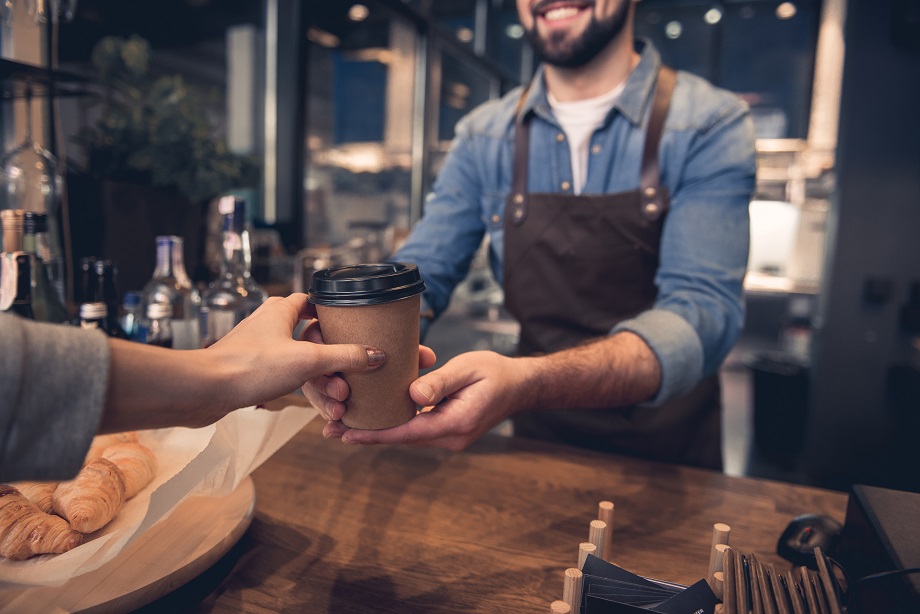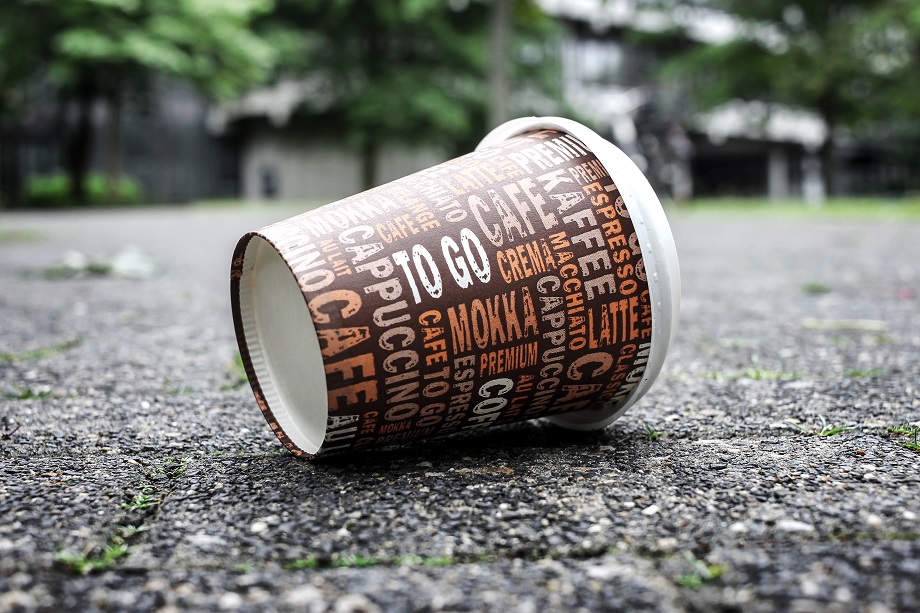Solutions to the Coffee Cup Recycling Problem
UK coffee drinkers throw away nearly 3bn cups every year. Peter Clayson at DS Smith Recycling discusses how the recycling industry is addressing the problem.
UK coffee drinkers throw away more than 2.5bn coffee cups every year
Only one in 400 is recycled, while the others risk ending up in landfill or for incineration.
Coffee waste is reaching boiling point
Britain is now officially a nation of coffee lovers – 20% of us visit a coffee shop every day, and it’s anticipated that by 2025 there will be 10,000 more coffee shops in the UK.
However, this love affair comes at a cost. According to recent insight from Eunomia, UK coffee drinkers throw away more than 2.5bn coffee cups every year – that’s enough to go around the world five times. Just one in 400 is recycled, while the others risk ending up in landfill or for incineration.
The need to tackle the coffee waste conundrum is reaching boiling point.
Why coffee cups aren’t suitable for mainstream recyclers
In the past, coffee cups haven’t been suitable for recycling alongside standard materials like paper and cardboard.
While disposable coffee cups are typically mostly paper, they have plastic polythene linings that make the cups waterproof. This lining means that the cups can be up to 12% plastic, and is difficult to separate from the paper, so when cups reach a high-volume pulping location, the contamination makes recycling them extremely difficult.
Furthermore, when coffee cups are contaminated with food or other material streams, such as if they’ve been used as a ‘mini-bin’ by commuters, they cannot be recycled at all.
 Innovating through collaboration
Innovating through collaboration
The recycling industry has been seeking a practical solution to the coffee cup recycling problem for some time now. In 2014, the Paper Cup Recovery and Recycling Group (PCRRG) was founded to drive collaboration between key stakeholders in cup recycling supply chains. In the PCRRG, DS Smith Recycling has led on a number of issues related to recycling best practice and identifying where legislative change is needed.
As part of the process, we at DS Smith have had to consider our contribution to the current situation. For instance, what needed to be done at our mills to allow cups to be recycled effectively? And how can we guarantee the quality of our paper products when we put used coffee cups into our recycled outputs?
So in January 2018, we recycled more than 4 million coffee cups – 40 tonnes in total – and conducted a number of tests around them. We blended them alongside pure paper at many different ratios, and analysed them for durability. In total we produced 3.5 million square metres of paper.
Our quality tests concluded that when small volumes of coffee cups were added to a larger volume of pure paper grades under controlled conditions, the plastic lining could be removed. This ensured that the polythene could be taken out during the pulping stage, while maintaining compliance with our rigorous paper quality standards.
Previously, it was a challenge to recycle coffee cups in a way that maintained the quality of the finished paper, which itself was intended for use in packaging production. In January, we were delighted to find that we had found a way to overcome that.
The future
We may have established the capacity that allows for effective cup recycling, but our solution won’t work without controlling the amount of coffee cups entering the recycling process. If too many coffee cups are included at one time, we won’t be able to produce paper that meets our high quality standards. That’s why coffee cups cannot simply be put in regular mixed paper streams, as we do with waste paper and used cardboard. The cups need to be collected separately so that we can ensure they are recycled effectively – and so that coffee residue doesn’t contaminate other paper for recycling, because if paper and cardboard are too wet, they cannot be recycled into clean paper.
This poses a new challenge for the supply cycle: can retailers, local authorities, collectors, and consumers agree on a national process that facilitates the segregation and collection of coffee cups? DS Smith wants to see our recycling capacity become part of a true recycling solution.
This requires infrastructure and education that won’t be achieved overnight, so we’ve called on the government to facilitate a long-term collection and recycling solution, whether through financial incentives, or in its planned revamp of the Packaging Recycling Note (PRN) system.
 Buy-in from the industry
Buy-in from the industry
Retailers and consumers will need to be fully bought in to new recycling processes if they are to be successful. We’re delighted that some of the biggest retailers are already moving in the right direction – we’re currently working alongside Costa and other major brands to improve the amount of coffee cups reaching paper mills.
What’s more, Costa themselves have recently announced a proposed financial incentive for cup collection, and Starbucks announced a £7m trial to create the world’s first 100 per cent recyclable coffee cup. These are steps forward in terms of publicity and real-world change, but we still need actions that will develop a permanent solution. We need a UK where 100% of coffee cups are being recycled – but at the moment, it’s less than 1%.
DS Smith’s work, alongside other members of the PCRRG, is facilitating a place where an effective recycling infrastructure could be created. But now is the time to act – the government must show that it’s serious about recycling, and must start working with industry bodies to put a plan into action.
*Statistics sourced from the EAC Report ‘Disposable Packaging: Coffee Cups’ https://publications.parliament.uk/pa/cm201719/cmselect/cmenvaud/657/657.pdf